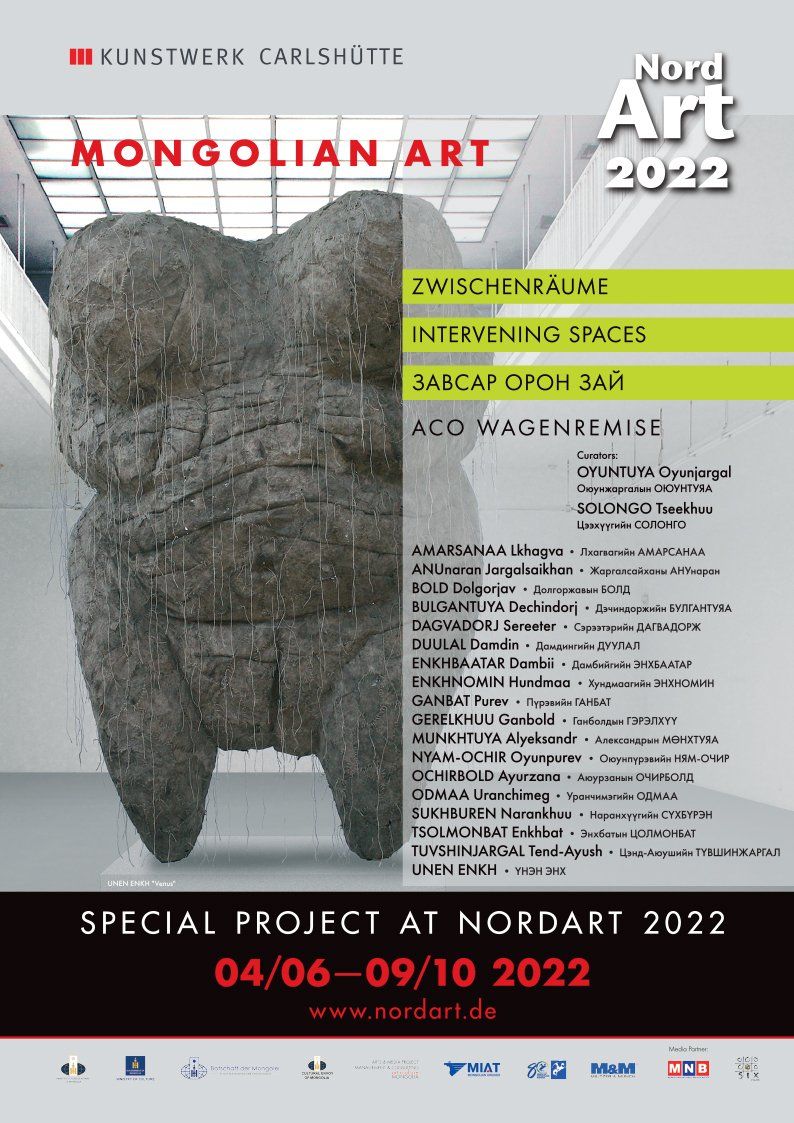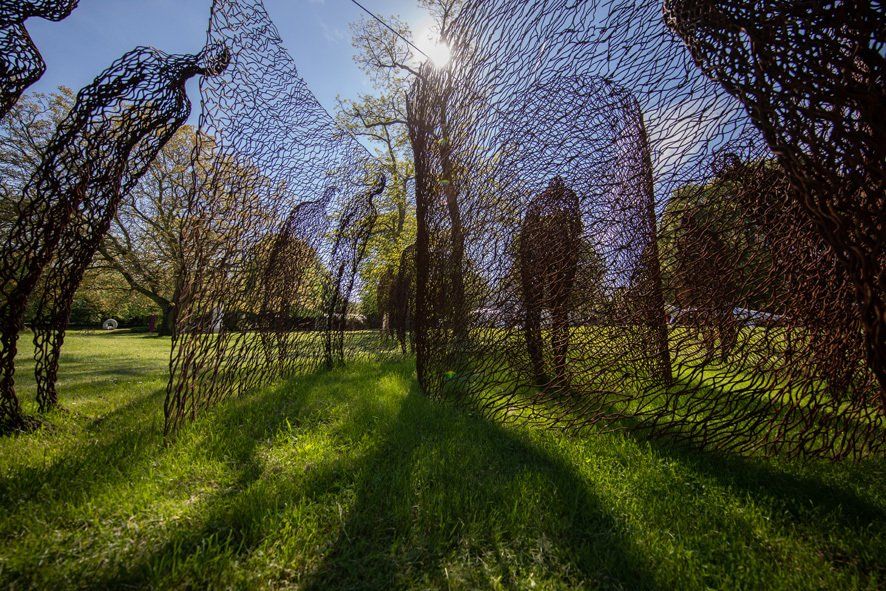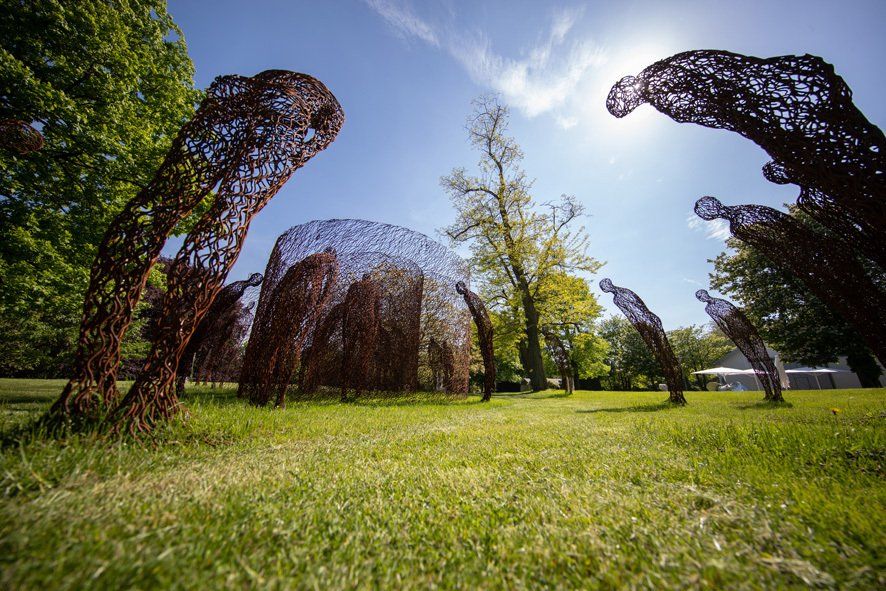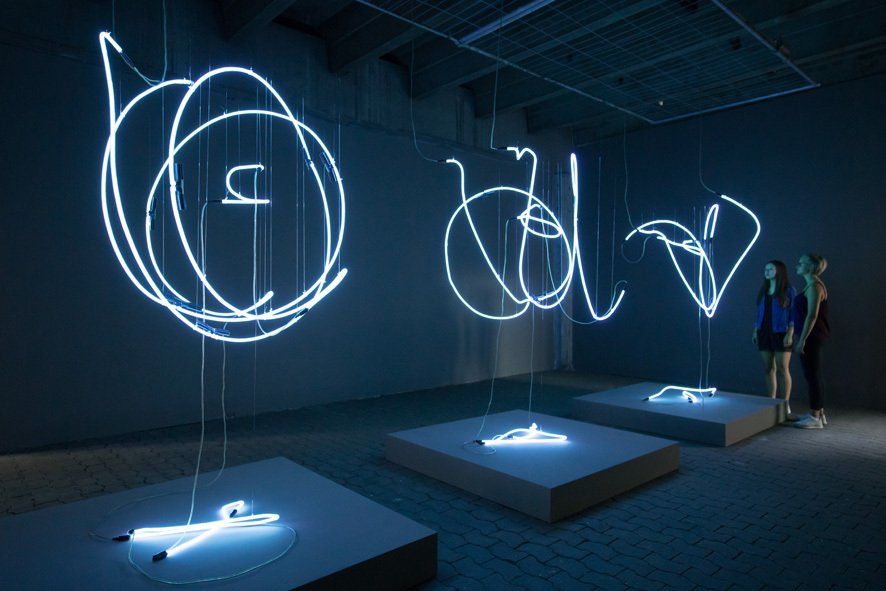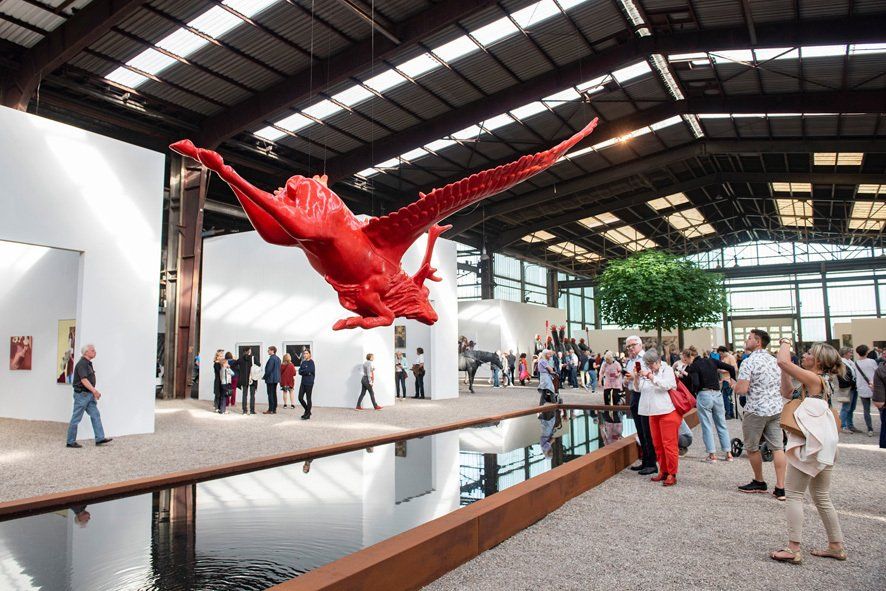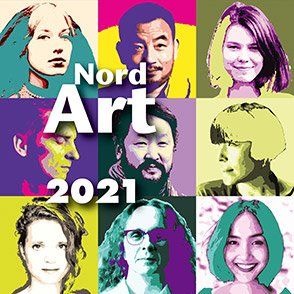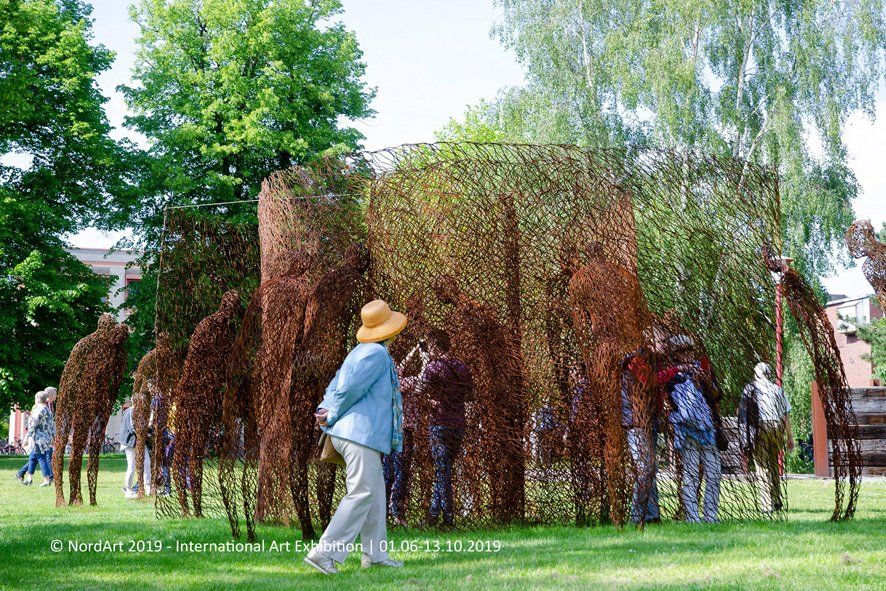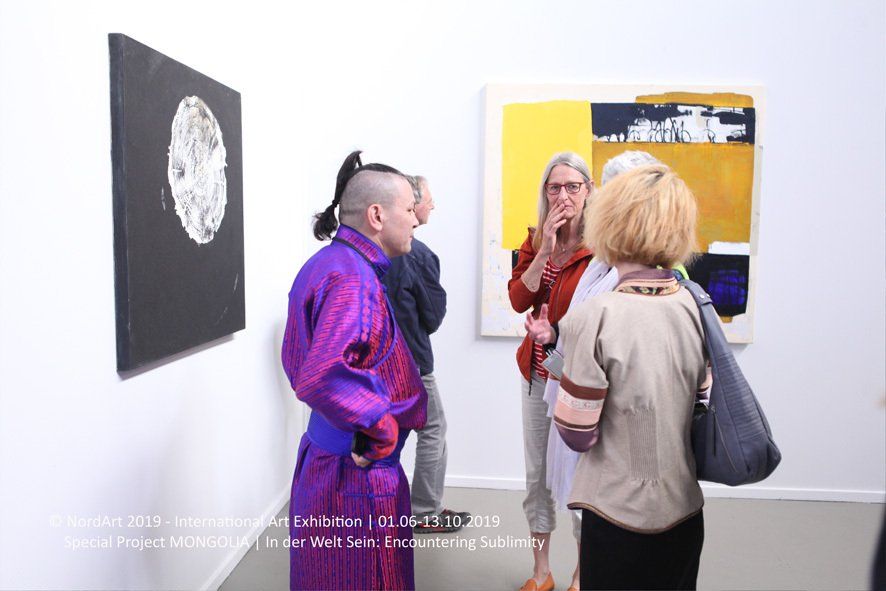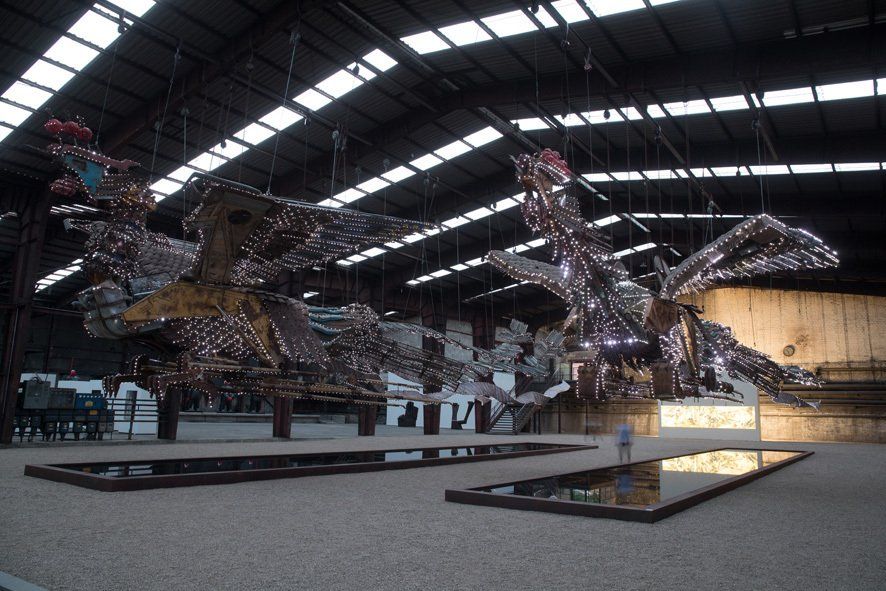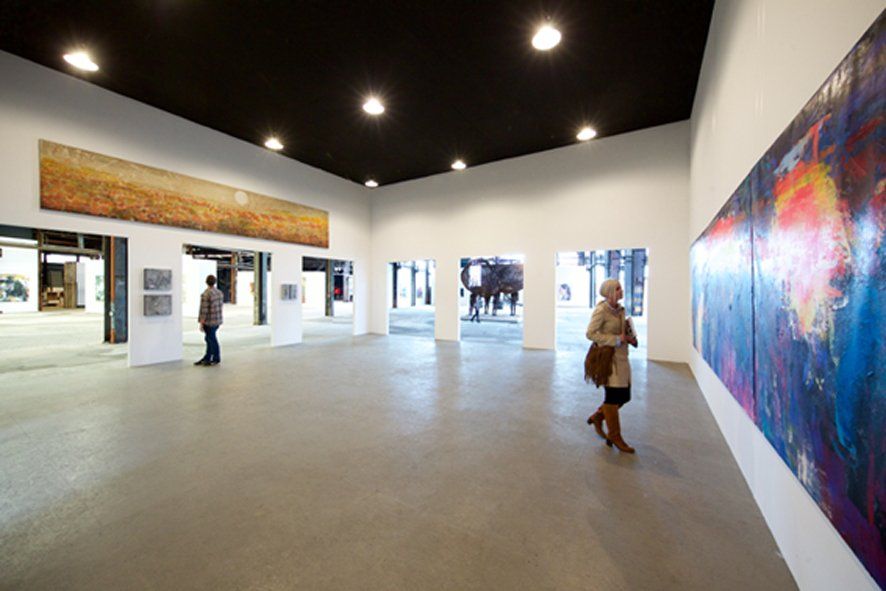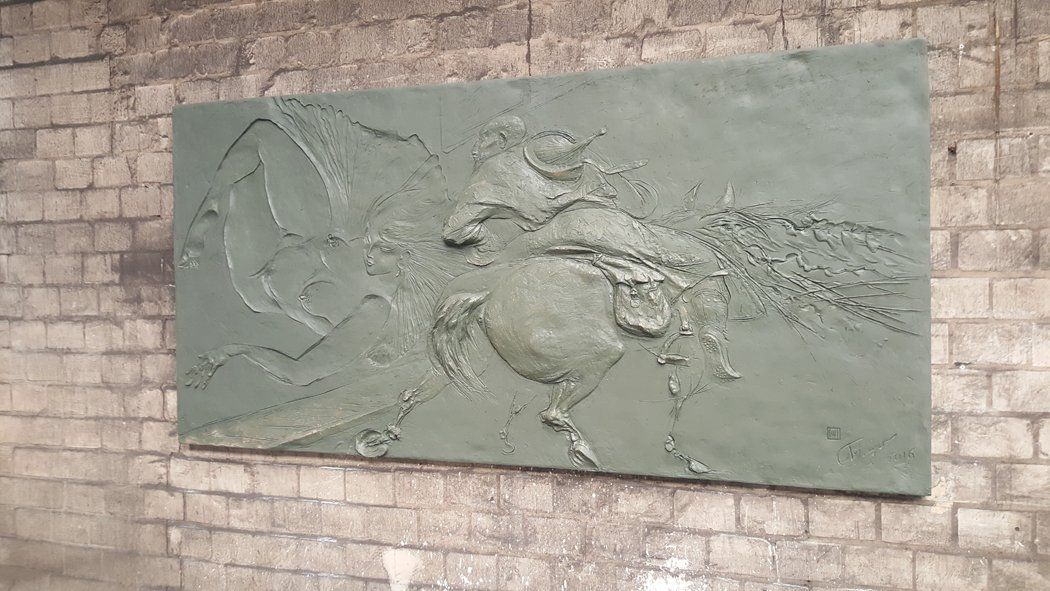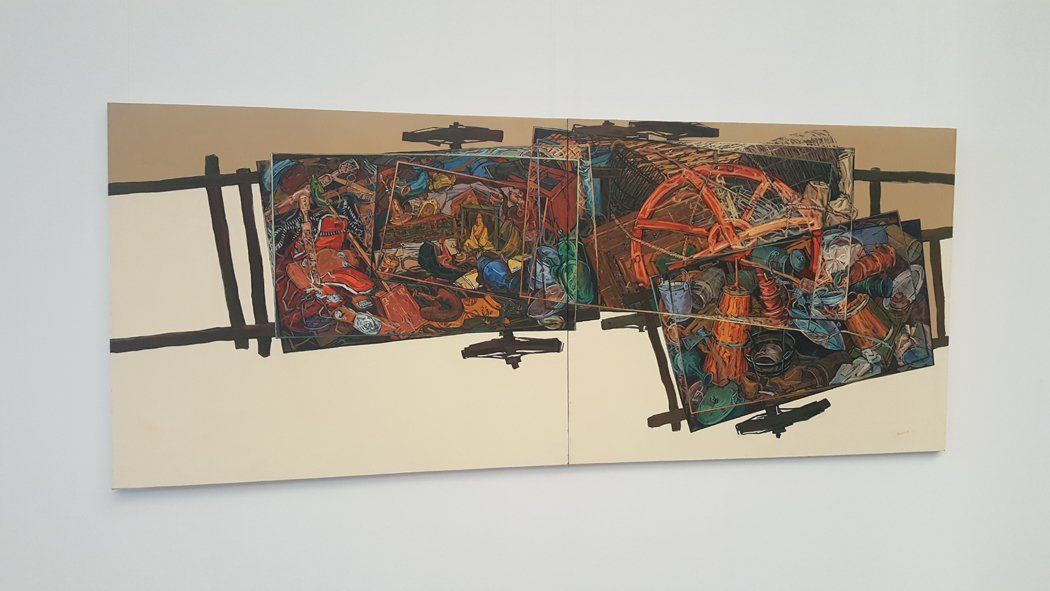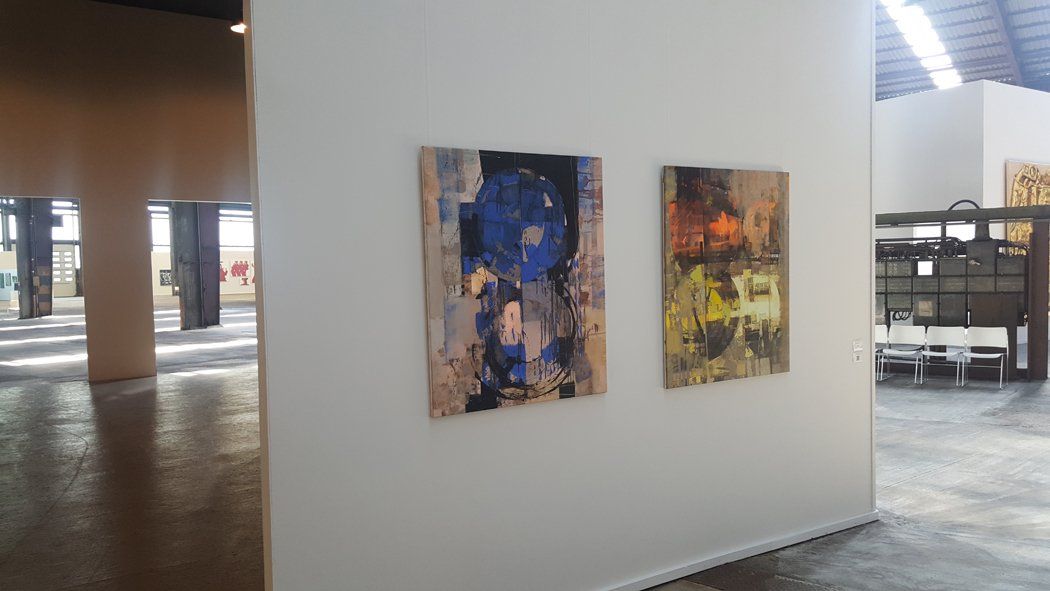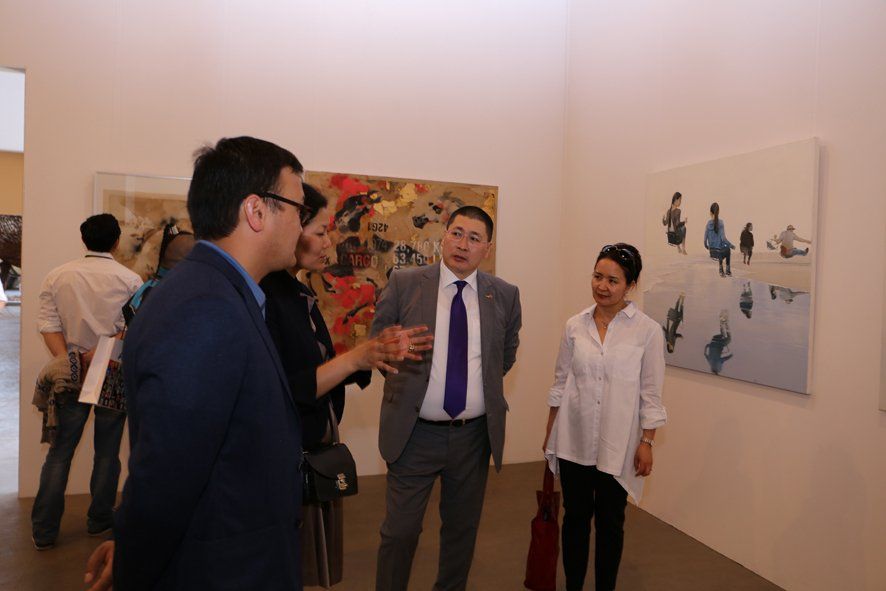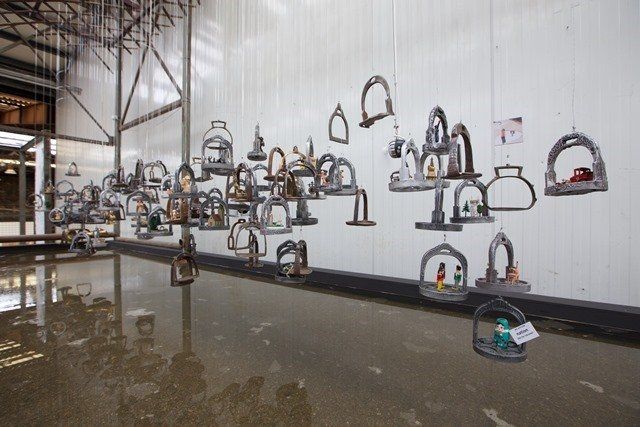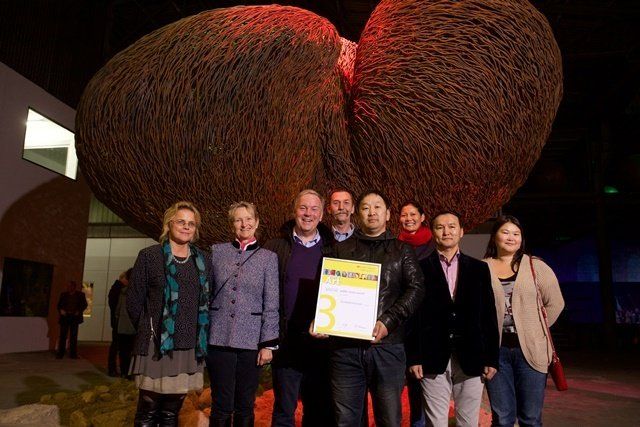NordArt International Art Exhibition
2022 SPECIAL PROJECT MONGOLIA
Mongolian Pavilion “Intervening Spaces”
2021NordArt
at the Kunstwerk Carlshütte
The 22nd edition of NordArt presents selected paintings and sculptures, photographs, video works and installations by more than 200 artists from all over the world. Each work stands on its own and at the same time in dialogue with the others. The exhibition thrives on the different perspectives of individual cultures, but also makes it clear that East and West, South and North share many common hopes and dreams. To deepen the insights, NordArt devotes a special pavilion to a different country each year and presents special projects, cooperates with embassies, cultural institutions and curators from different countries. NordArt is one of the largest exhibitions of contemporary art in Europe and is conceived annually by Chief Curator Wolfgang Gramm since 1999.
The country focus of NordArt 2021 is Ukraine. The patronage has been taken over by the Ukrainian Ambassador to Germany H.E. Dr. Andrij Melnyk.
The country focus of NordArt 2021 is Ukraine. The patronage has been taken over by the Ukrainian Ambassador to Germany H.E. Dr. Andrij Melnyk.
Some people may find north Germany bleak, but its beauty is undeniable. Few exhibition spaces express its unique atmosphere so eloquently as the Carlshütte, a former iron foundry operated by the first manufacturing company in the dukedoms of Schleswig and Holstein. Opened in 1827 and closed in 1997, this site in the town of Büdelsdorf is an impressive industrial monument. With its historical buildings, the colossal foundry halls, the extensive park with its old trees and an exhibition café, the Kunstwerk Carlshütte has developed over the years into a very special place for exhibitions, concerts, readings, theatre performances and film screenings.
Since 1999 the NordArt has established itself as one of the largest exhibitions of contemporary art in Europe which takes place anually in the summer months. The NordArt is an overall work of art in its own right and is designed as such each year. More than 200 international artists, selected by a jury, present a comprehensive panorama of contemporary art. Each individual work not only speaks for itself but also creates new perspectives when seen juxtaposed against the unique backdrop offered by the Carlshütte and the adjacent historical sculpture park. The exhibition grounds include the huge aisles of the Carlshütte with their 22,000 square metres of floor space, the charming ACO Wagenremise building and an 80,000 square metres sculpture park. Around 4000 artists over 100 countries apply to participate in NordArt every year.
The "Arts & Media Project Management & Consulting NGO" have been co-organizing and coordinating since 2015 the Mongolian Pavilions at the NordArt as an official cooperation partner. The official partners of the Mongolian Pavilions are the Ministry of Foreign Affairs of Mongolia, the Ministry of Education, Culture, Sciences and Sports of Mongolia and Mongolian Embassy in Germany.
Chief curator of the NordArt:
Wolfgang Gramm
Co-Curator of the NordArt:
Inga Aru
Hosts of Kunstwerk Carlshütte:
Hans-Julius and Johanna Ahlmann
NordArt 2021:
5 June to 10 October 2021
Venue:
Kunstwerk Carlshütte
Vorwerksallee, 24782 Büdelsdorf, Germany
2019 SPECIAL PROJECT MONGOLIA
Mongolian Pavilion “In der Welt Sein (Being-in-the-world): Encountering Sublimity”
Since its beginnings in 1999 NordArt has developed into a stage of contemporary art. It became permeable to new artistic means of expression, to experimental forms of art and to thinking beyond Eurocentric ideas or geopolitical identities. But NordArt is also a focal point of communication. It is the culture of communication that finds its own way independently of mercantile considerations, when all visitors, artists and partners of NordArt also use the halls and gardens of this exhibition as a platform for discussion. This thrives particularly well in the ambience of this exhibition, as many visitors like to report their new or refreshed contacts. The NordArt is in this respect a platform of the art world and creativity and not only in northern Germany.
For the past five years, NordArt has presented the current positions and diversity of Mongolian contemporary art. We would like to thank our partners very much. Many Mongolian artists have been using NordArt as a catalyst for their international careers since 2015. We would especially like to thank the NordArt curatorial team, without whose support this development would not have been possible.
This year, for the first time, we will open NordArt dependance in Mongolia to allow the Mongolians to personally experience the idea of NordArt. In doing so, we will draw a summary of our five-year long-term cooperation, in particular the participation of the previous 77 Mongolian artists at the NordArt. We are especially pleased that the "NordArt-Ulaanbaatar" International Sculpture Symposium will take place for the first time in Mongolia from August 12th to September 5th 2019. 15 international sculptors will create their new works on site and exhibit them in public.
The artworks of the 23 selected artists presenting Mongolia at the NordArt 2019 International Art Exhibition will deal with the theme In-der-Welt-Sein /Being in the World/: Encountering Sublimity. There is a huge difference between a Being-in-the-world before the industrialization and a Being-in-the-world after the industrialization that alienated from Nature and rooted in the knowledge of the Renaissance. That is to say, the structure of perception in traditional society differs drastically from the self-reflective, Cartesian way of thinking that sees itself from “outside” or in other words “Man and his doubles” as Foucault put it.
Modern man tends to embody the Being-in-the-world here, right now. He also emulates to embody the sublimity in the world and tries to consolidate the finite and infinity. Being-in-the-world concretizes itself between the sublimity and visible Being. Human being exists in between and within the Being-in-the-world and meantime encounters with sublimity and outer world. The knowledge of the Being-in-the-world that encounters with unnatural phenomenon and profundity is an intermediary form between outer world, infinity and sublimity. On one hand, the intermediary form that contains both the Being-in-the-world and sublimity embodies on ground, on the other hand it touches the sublimity as well. The intermediary form that blended with the sublimity constantly disintegrates while attempting to form modern profundity. Behind every experience that attempts to form sublimity in the world, there’s always some intentions are hidden which desires to materialize infinity and formalize the spirituality in the world.
These artworks of 23 artists came together under the main concept that focus on a pursuit of junction and disjunction between the Being-in-the-world and encountering the sublimity, even though all these artworks vary from each other in terms of expression, medium and language.
Oyuntuya Oyunjargal & Bodibaatar Jigjidsuren
Curators of Mongolian Pavilion
5th Anniversary of Cooperation with NordArt
Since its beginnings in 1999 NordArt has developed into a stage of contemporary art. It became permeable to new artistic means of expression, to experimental forms of art and to thinking beyond Eurocentric ideas or geopolitical identities. But NordArt is also a focal point of communication. It is the culture of communication that finds its own way independently of mercantile considerations, when all visitors, artists and partners of NordArt also use the halls and gardens of this exhibition as a platform for discussion. This thrives particularly well in the ambience of this exhibition, as many visitors like to report their new or refreshed contacts. The NordArt is in this respect a platform of the art world and creativity and not only in northern Germany.
For the past five years, NordArt has presented the current positions and diversity of Mongolian contemporary art. We would like to thank our partners very much. Many Mongolian artists have been using NordArt as a catalyst for their international careers since 2015. We would especially like to thank the NordArt curatorial team, without whose support this development would not have been possible.
Nord Art International Art Exhibition 2017 / 2018 / 2020
2016 Mongolian Pavilion
Tradition and Modern Age
The renowned international art exhibition NordArt is a unique platform to continue to present the current positions of Mongolian contemporary art in the world. First of all, we are deeply thankful to our partners for their great cooperation, which gives Mongolian art such an opportunity.
Tradition, turmoil, return – all this is reflected in the Mongolian art. The checkered and eventful history and the cultural tradition of closeness to nature and the preserved nomadic culture of the Mongolians, who were united by Chinggis Khaan in the 13th century and put their religious roots in Shamanism and Buddhism, are reflected in the works of the Mongolian artists.
From Buddhist images and graphics in former times via the "Socialist Realism" in the 20th century, that suppressed pro-western representations, to modern art in the present day–the country is rich in talented artists and successful art works.
In the past many paintings served religious purposes or religious storytelling. In particular, the lamaist Buddhism, the dominant religion in Mongolia in the 17th century, had great influence on paintings and sculptures. Thangkas, large-sized picture rolls of cotton or leather, representing Buddhist deities and decorating monasteries, are a typical Mongolian traditional art form. Thangkas are made usually with technique of silk painting and then lacquered. Mineral colors are used for priming the thangkas and herbal colors for shading effects and outlines. The technique of painting, use of mineral colors and iconography of Buddhist thangka serves as the basis of style "Mongol Zurag" in traditional and contemporary forms.
In the socialist era the religious motives were replaced by realistic images. Hemmed in Soviet-dominated system and focused on realistic representations the Mongolian artists had little access to new media and the free artistic movements of the 20th century in the western world. After the revolution in 1921, the techniques of oil painting became established in the Mongolian art on a larger scale. Unlike the western art form of oil painting, in Mongolia an own traditional form of painting was formed.
The political-social upheavals of the 1980s and 1990s also influenced the Mongolian art scene. The narrow limits of state-imposed artistic movements dissolved, the new personal circumstances now dominated independence and liberalism, but also a form of uncertainty. Many artists emancipated themselves radically from the suffocating conditions of the socialist era and quickly learned the possibilities and prospects that were offered by the new conceptual approach to modern western art. With the sudden collapse of the socialist system the new freedom of subject matter, artistic styles, themes and media reaction became an overwhelming new reality for the artists to reconcile with.
Young creative folks and artists came together in collectives to meet new challenges and to create new ideas and artistic styles. Identity and consciousness concepts were comprehensively covered and played through. Looking for its own identity between tradition and modernity many young artists experiment in their works and ask the question, how our consciousness is changing in a globalized world. Their arguments strike more global issues: even if the shading due to the history is different – it is the same thoughts and hopes, its own doubts, which people bother anywhere in the world.
The Mongolian artworks show that tradition and modernity are very close to each other also in Mongolia. Many young Mongolian artists connect animistic rock art, Buddhist iconography and traditional Mongolian painting with the socialist realism and western abstraction, thus creating a new, unique style. The artists choose traditional forms of expression, as well as modern photography, video art, installation, performance art and sculptural conversions. Western and Mongolian traditions come together in the contemporary Mongolian art at surprisingly modern unique representations, which have their own value of brand recognition in the world of art scene.
Oyuntuya Oyunjargal, Curator Berlin/Ulaanbaatar
2015 Country Focus–Mongolia
Modern Transformations – New Identities
The Mongolian art scene underwent dramatic change in the late 1980’s and early 1990’s parallel to the upheaval of the entire society at large. Socio-politically, artists shifted from their previous status as ‘states’ artist’ into new, more independent and liberal, yet also more uncertain circumstances. Artistically, most artists redeemed themselves from the suffocating penetration of the socialist realm. Subsequently, especially younger artists moved closer together making art in collectives in order to examine and challenge themselves in their own community. New concepts of identity emerged within the art community on individual and collective as well as political and cultural levels. This particular phenomenon is still relevant in today’s Mongolian society. Emerging talents of the young generation continue to reflect their search for identity through art, often knit together in collective and collaborative structures, such as Blue Sun or Human Love Nature Freedom.
NordArt’s Mongolian Pavilion displays artworks from over 30 mainly young contemporary artists from a variety of disciplines, but not disregarding successful and established artist from the preceding generations. The pavilion hosts the until today biggest group show of contemporary Mongolian art in Europe. The creative means to produce narratives of their past, present and future are multifold, including drawings, paintings, sculptures and installations as well as photographs and videos.
The collaboration with NordArt is an amazing opportunity for the participating artists as well as signal reflecting on the entire Mongolian art and culture scene.
Most of the artists are not yet established in the domestic art scene, mainly due to the prevalence of a rather conventional taste. The domestic Mongolian art market relies on acknowledged artists from previous generations, whose works are artistically refined but contextually disengaged. Appreciation of contemporary art in Mongolia is still in the process of gaining ground, making it difficult for artists to break through with their unconventional language. Some artists pursued further studies and work in Europe or North America, having completed their education in traditional Mongolian painting at home. This artistic migration led to attention and recognition in the global art scene rather than in their home county.
Being the country of focus of NordArt 2015 is an extraordinary opportunity to present contemporary Mongolian artistic positions to the world.
BODIBAATAR Jigjidsuren, Curator, Ulaanbaatar/ London
OYUNTUYA Oyunjargal, Curator, Berlin/Ulaanbaatar



